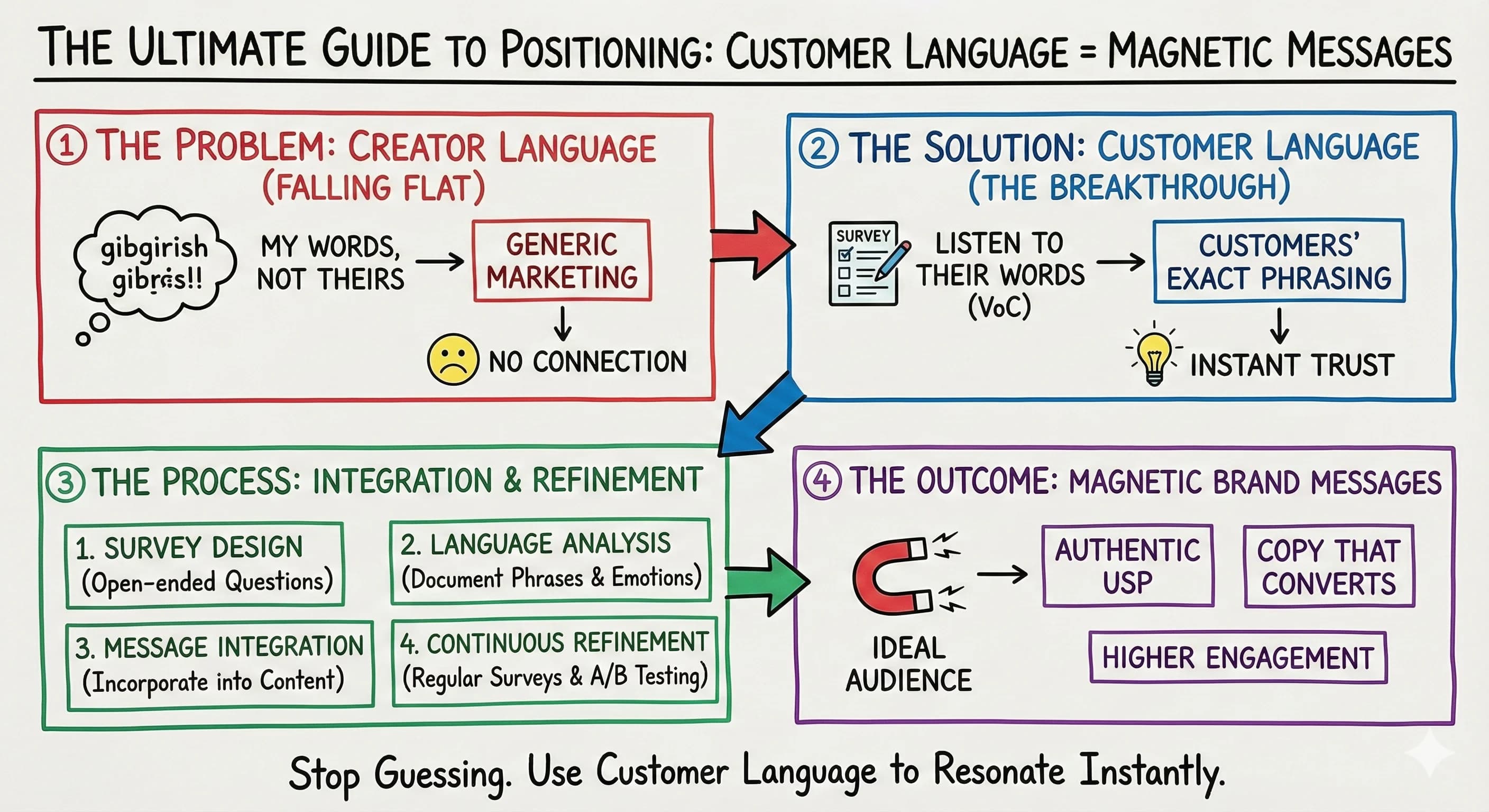The Ultimate Guide to Positioning: How Customer Language Creates Magnetic Brand Messages
Stop guessing at positioning. Use customer language to create magnetic brand messages that resonate instantly. Complete guide with step-by-step implementation strategies.
•4 min read
Details
Categories:

Loading content...

